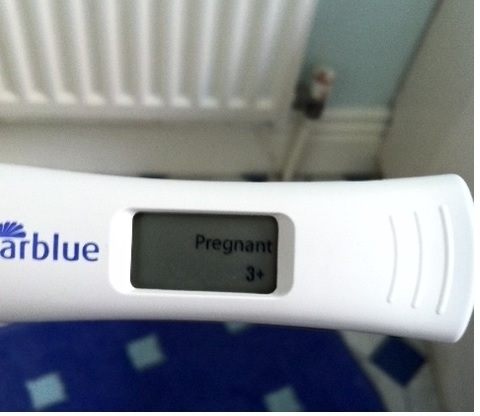- Our Whistle-stop Tour of New York City with Kids Part Two: Where We Stayed and Ate
- Our Whistle-stop Tour of New York City With Kids Part One: Getting There
- Our Family Trip to Berlin
- Packing Essentials for a Family Ski Holiday
- The Big (and Not So Big) Move
- The day Shawn Mendes taught my daughter an amazing life lesson
- 10 Things for kids to do in Costa Adeje, Tenerife
- The Croke Park Stadium Tour
- Tips for making the most of a day out at Tayto Park
- 10 Kids TV characters you will love to hate as a parent
BFP (and other pregnancy lingo!)
When I discovered I was pregnant I also discovered a new language and new exercises for 2nd trimester which has to be done for the welfare of both mother and the child. Below is a selection of terms and acronyms (often used in online speak!) that I have discovered during my journey.
AF – Aunt Flo (period)
Ovulation – the release of an egg in a woman which happens once a month
Conception – the joining of the egg and the sperm
BFP – Big Fat Positive (refers to a positive pregnancy test)
BFN – Big Fat Negative (refers to a negative pregnancy test)
hCG – the pregnancy hormone that is detected by pregnancy tests and contributes to early pregnancy symptoms
Morning sickness -the nausea and vomiting associated with early pregnancy – although it can occur any time of the day
hyperemesis gravidarum– severe morning sickness which often results in hospitalisation for rehydration, rest and often anti sickness medication
Spontaneous abortion – the medical term for a miscarriage
Miscarriage – the natural loss of an embryo or fetus before 24 weeks. Most miscarriages take place in trimester 1 – by 12 weeks, however there are a small number that occur later in the pregnancy.
Still birth – the birth of a non living fetus. A still birth occurs when the baby is delivered that has died in the womb.
Trimester – pregnancy is divided between three trimesters approximately 3 months or 13 weeks each
Vaginal delivery – birth of a baby via the birth canal
C-section – surgical delivery of a baby via an incision in the abdomen
Forceps – an intervention in the delivery of a baby that involves a medical utensil called a forceps that is wrapped around a baby’s head to help pull baby out.
Vacuum – an intervention in the delivery of a baby that involves a medical utensil which is attached to the baby’s head (using a vacuum) to help pull baby out.
Epidural – a method of anesthesia and pain relief used during labour / c-section
Placenta – the new (temporary!) organ that is created to link baby with mammy in the womb – allowing fluid, blood supplies and “food” to baby.
Placenta previa – where the placenta blocks the cervix and therefore the birth canal. Where placenta previa persists in late pregnancy a c-section is generally indicated.
Pre-eclampsia – a serious medical complication that develops usually in late pregnancy which involves high blood pressure and protein the urine. The only known cure is immediate delivery of the baby either via c-section or induction of labour.
Scan – ultrasound scan is a way of taking a picture of inside your womb and see and check health of baby
Embryo – during pregnancy a baby is referred to as an embryo when it is in the first 8 weeks of pregnancy
Fetus – during pregnancy a baby is referred to as a fetus after the first 8 weeks when it moves into the fetal stage of the pregnancy
Breech – baby in a head up position (when it should ideally be head down). A c-section is generally indicated however some practitioners will carry out a breech vaginal delivery
Cephalic – baby in a head down position in preparation for birth
Transverse lie – where a baby is lying across the womb – this position is the most problematic and generally a normal delivery is not possible
Gestational diabetes – a form of diabetes that occurs only in pregnancy
Trisomy – occurence of three chromosomes where there should only be two. A common human trisomy is Downs syndrome
Induction of labour – bringing labour on before it would otherwise have naturally started. Induction can be via natural means or more commonly artificially started.
Prostaglandin – a hormone associated with birth. An artificial version of this hormone is used in the artificial induction of labour
oxytocin – a hormone most associated with during and after birth
Pitocin – an artificial form of oxytocin often used to accelerate labour
Sweep – a natural but artificial way to try to induce labour by sweeping a finger around the neck of the cervix – debatable regarding its effectiveness!
Rupture of membranes – when the amniotic sac that the baby is held in, surrounded by fluid breaks and the fluid leaks or gushes out of the vagina – also known as breaking of the waters. Here is a great article on pelvic pain and how to deal with it.
Are there any other pregnancy / birth terms that you have come across that you want a lay persons explanation for? Just post in the comments section below and we will update the list!


One Comment